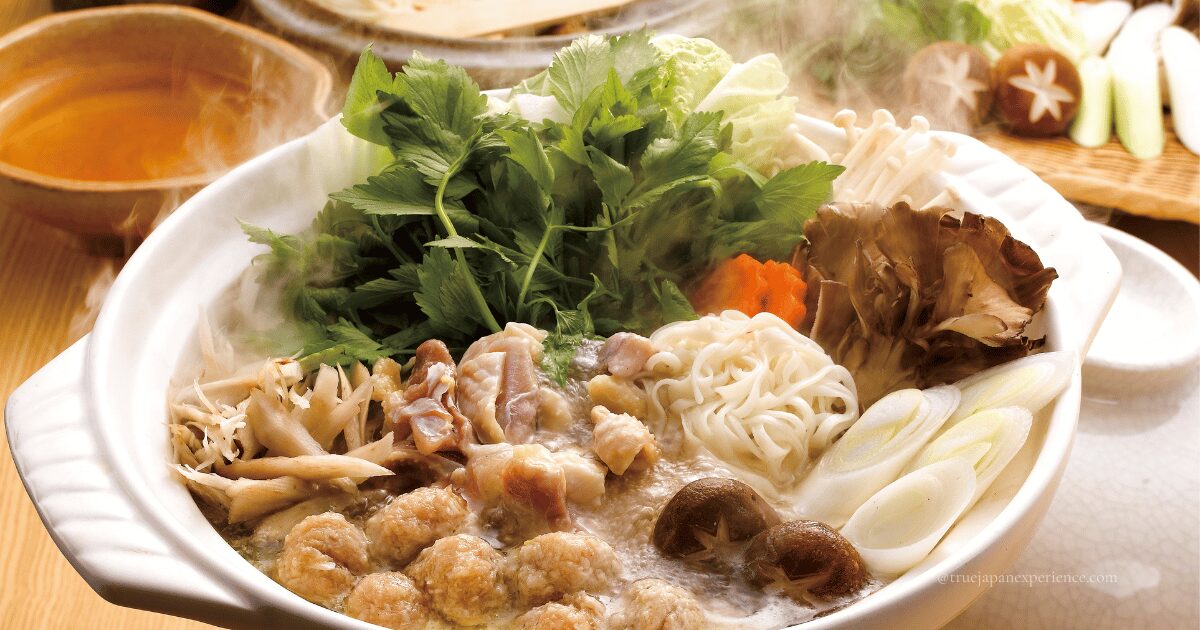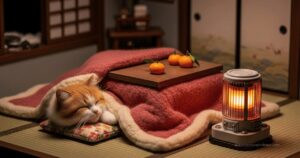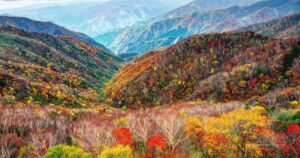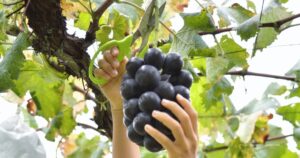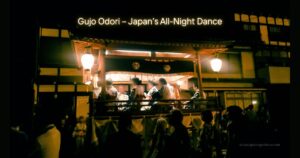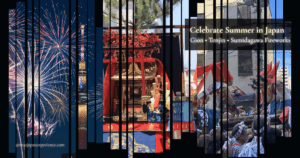When winter comes to Japan, the air becomes cold, and the streets are filled with soft lights and the smell of warm food.
During this season, people in Japan enjoy special dishes that make both the body and the heart feel warm. These foods are not only delicious but also part of Japanese culture and tradition.
If you visit Japan in the colder months, tasting Japanese winter food is one of the best ways to experience the season.
In this article, you will learn about the most popular and traditional winter dishes in Japan, from hot pots with family to tasty sweets on the street. Let’s explore together all the foods you should try when visiting Japan in the cold season.
Hot Pot Dishes (Nabe)
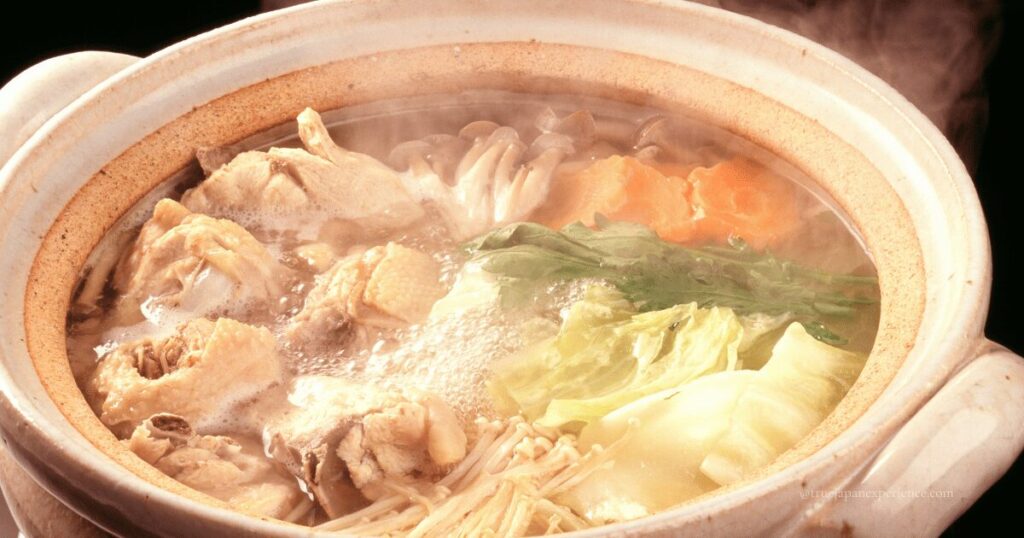
One of the most popular Japanese winter food options is the hot pot, called 鍋 (nabe) in Japanese.
This dish is cooked at the table in a big pot, and everyone eats together. It is both a meal and a social event, because people sit around the hot pot, talk, and share food.
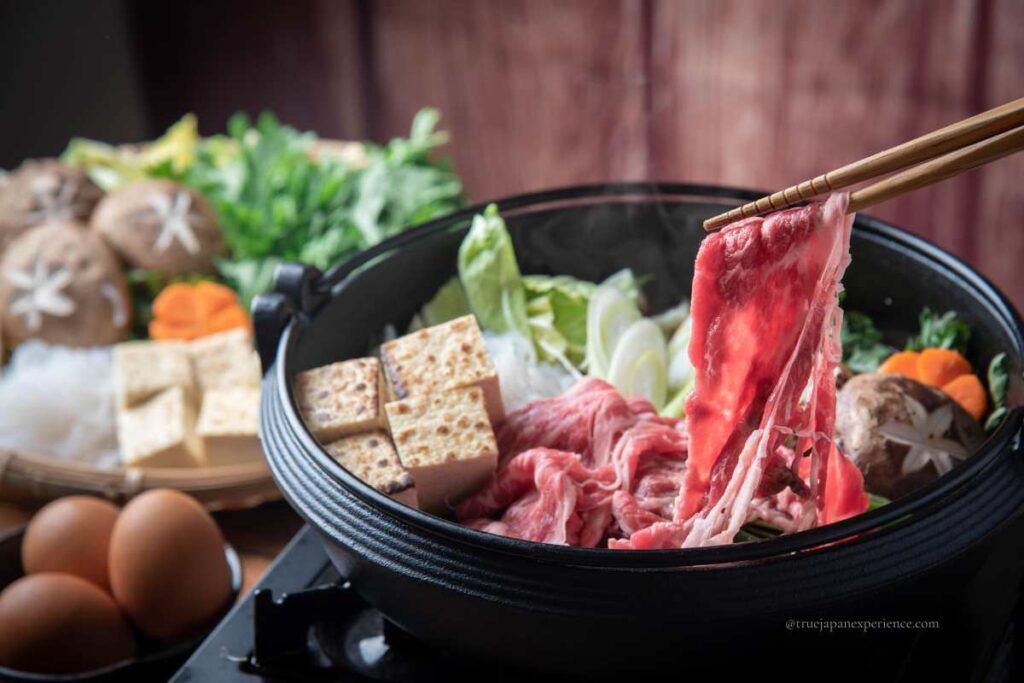
There are many types of nabe:
- 寄せ鍋 (Yosenabe) – A mixed hot pot with vegetables, tofu, meat, and seafood in a tasty broth.
- すき焼き (Sukiyaki) – A sweet and salty hot pot with beef, tofu, green onions, and noodles cooked in soy sauce and sugar. The meat is dipped into raw egg before eating.
- しゃぶしゃぶ (Shabu-shabu) – Thin slices of meat (often beef or pork) are quickly dipped into boiling water or broth, then eaten with sauce.
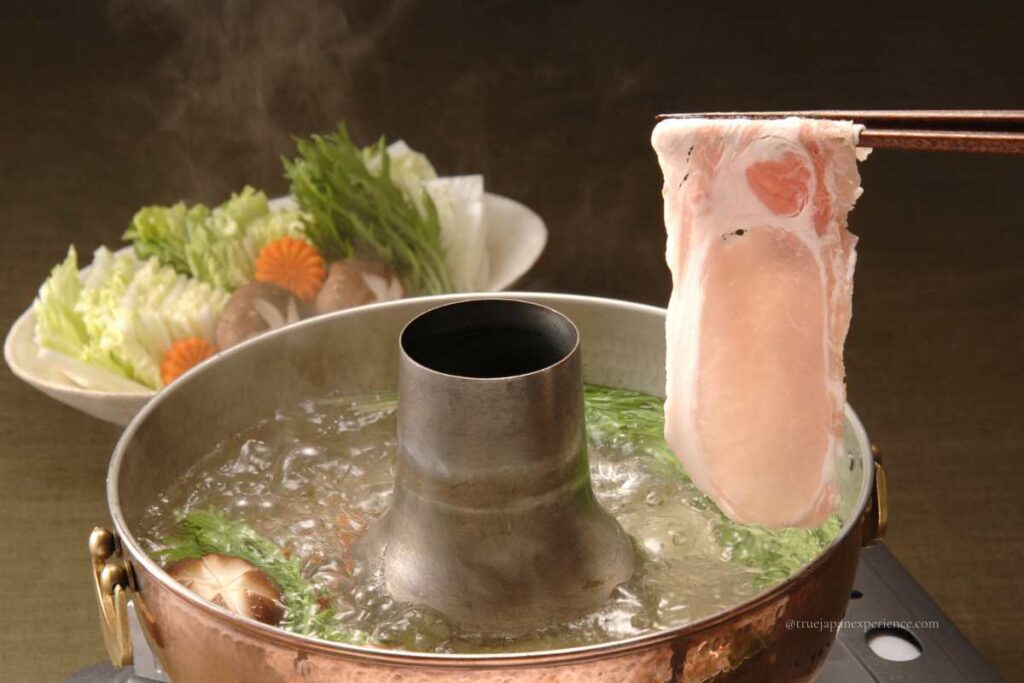
Another fun part of nabe comes at the very end.
When most of the meat and vegetables are gone, the broth is still full of rich flavor. Many people add rice to make zosui (a kind of rice soup), or put in ramen or udon noodles for a warm finish. Some even try pasta for a western-style twist.
This “last dish” is called shime in Japanese, and it is one of the best parts of the meal.
It lets you enjoy every drop of the soup and makes the hot pot feel complete. You may find yourself looking forward to the shime as much as the main hot pot itself!
Oden: A Warming Street Food
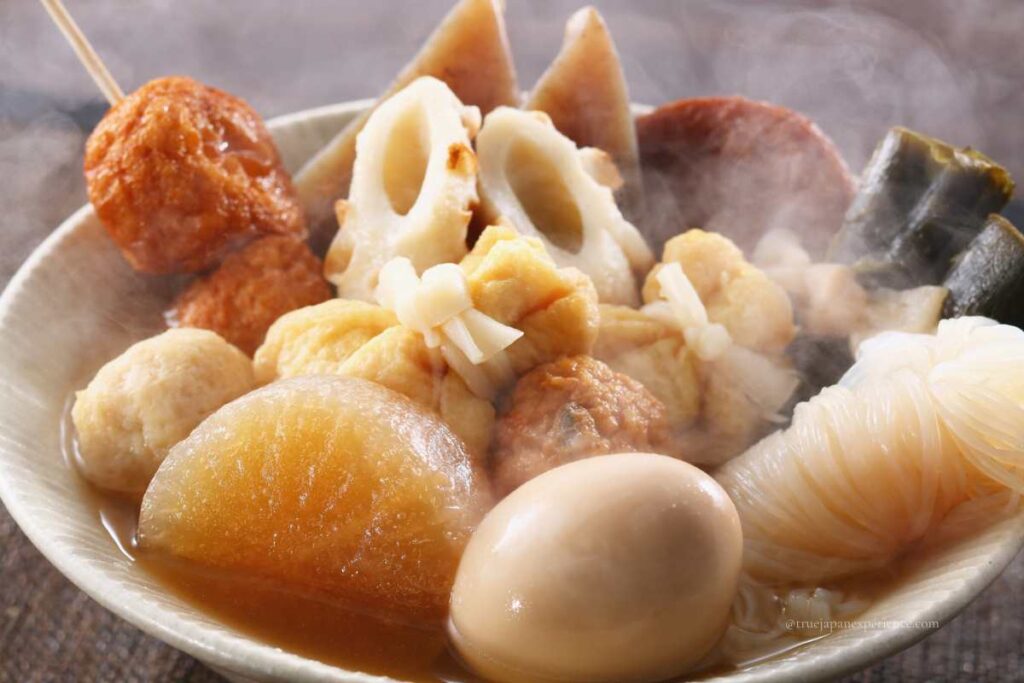
Another famous Japanese winter food is おでん (oden).
Oden is a dish where ingredients are slowly cooked in a light soy sauce broth. This style is the most common, but recipes can change depending on the region. In some areas, the soup is made with miso, and the choice of ingredients can also be different.
This variety makes oden an interesting food to try in different parts of Japan.
Common ingredients include:
・大根 (daikon), a big white radish
・Boiled eggs
・ちくわ (chikuwa), a fish cake tube
・こんにゃく (konnyaku), a jelly-like food made from yam
Oden is very flexible, and every region has its own style. The broth in Kansai (Osaka, Kyoto area) is light, while Kanto (Tokyo and east) often has a stronger flavor.
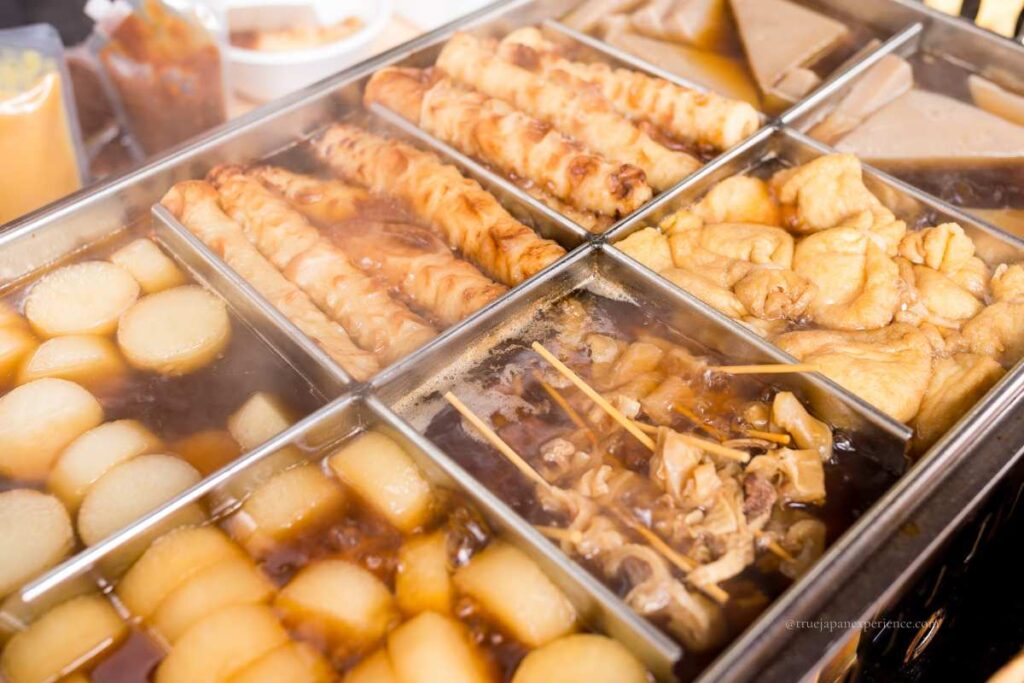
Foreign visitors will be happy to learn that oden is sold not only at restaurants and street stalls but also at convenience stores like 7-Eleven, Lawson, and FamilyMart during winter.
On a cold night, holding a cup of hot oden from a shop can be one of the simplest but best travel experiences in Japan.
Ramen in Winter
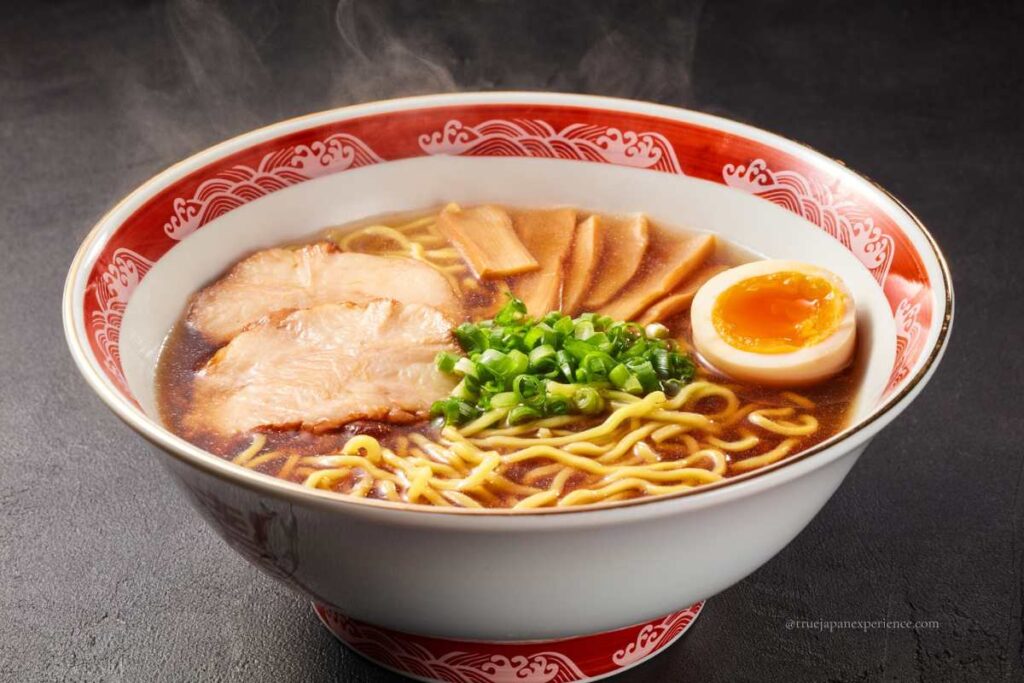
Ramen is available all year, but in winter it feels even more special.
A hot bowl of steaming noodles with rich broth is a perfect way to fight the cold. Ramen is one of the most famous Japanese winter food options abroad too, but visiting Japan lets you taste regional varieties you cannot find anywhere else.
For example, Sapporo in Hokkaido is famous for its miso ramen. The thick miso soup, with butter and corn, is designed to give warmth in the snowy north. Hakata, in Kyushu, has a different style with a rich pork bone broth called 豚骨 (tonkotsu).
Eating ramen in winter is not only about the flavor but also about the atmosphere. Sitting at a small shop, watching snow outside, and enjoying hot broth is an experience Japan can offer only in the cold months.
If you want to dive deeper into ramen culture and travel tips, check out our full guide here:
👉 Fall in Love with Japanese Ramen: Flavors, Culture, and Travel Tips
Seasonal Fish and Seafood
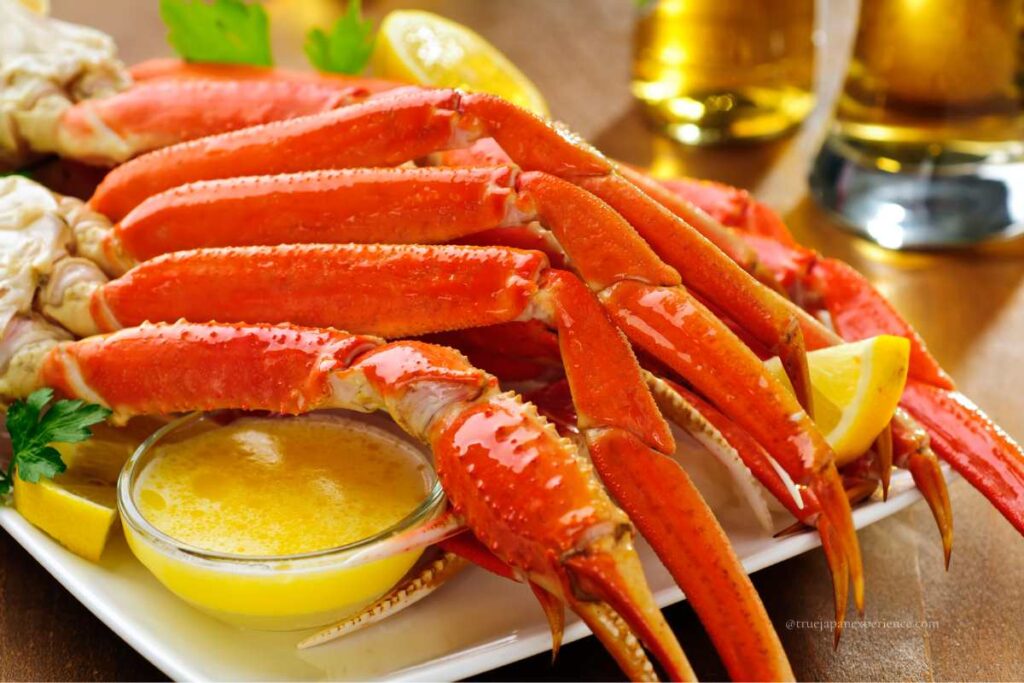
Japanese winter is also the season for some of the best seafood.
People look forward to enjoying dishes that are only available or at their best during this time.
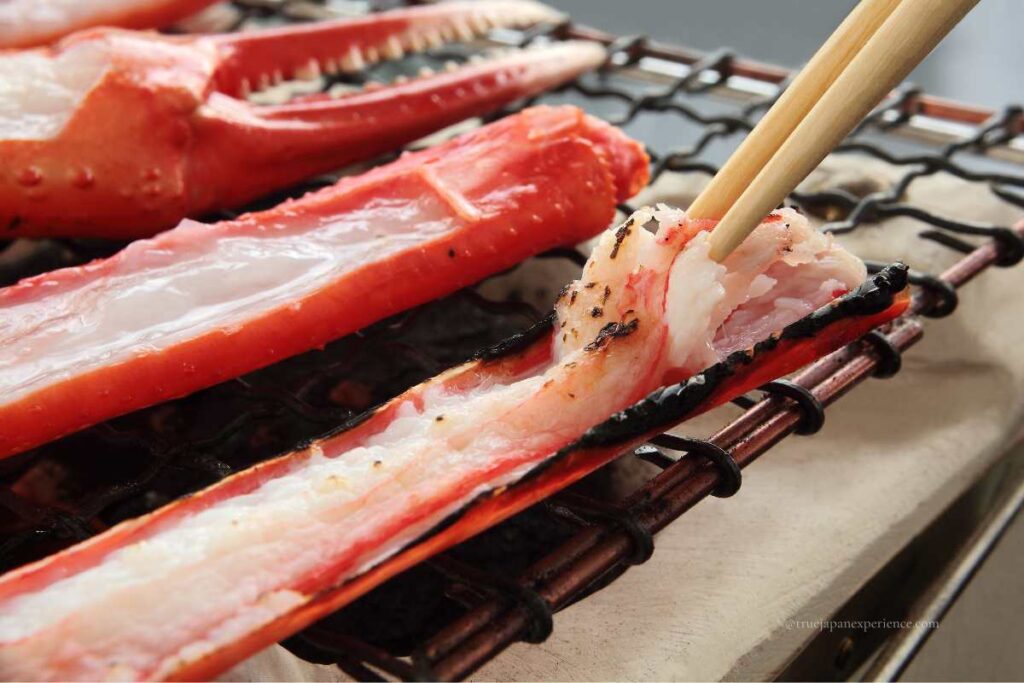
Crab: In Hokkaido and the Hokuriku region, crab is one of the most popular specialties in winter. Different types like snow crab and king crab are served grilled, boiled, or in hot pots. Many visitors travel north just to enjoy fresh crab at its best time.
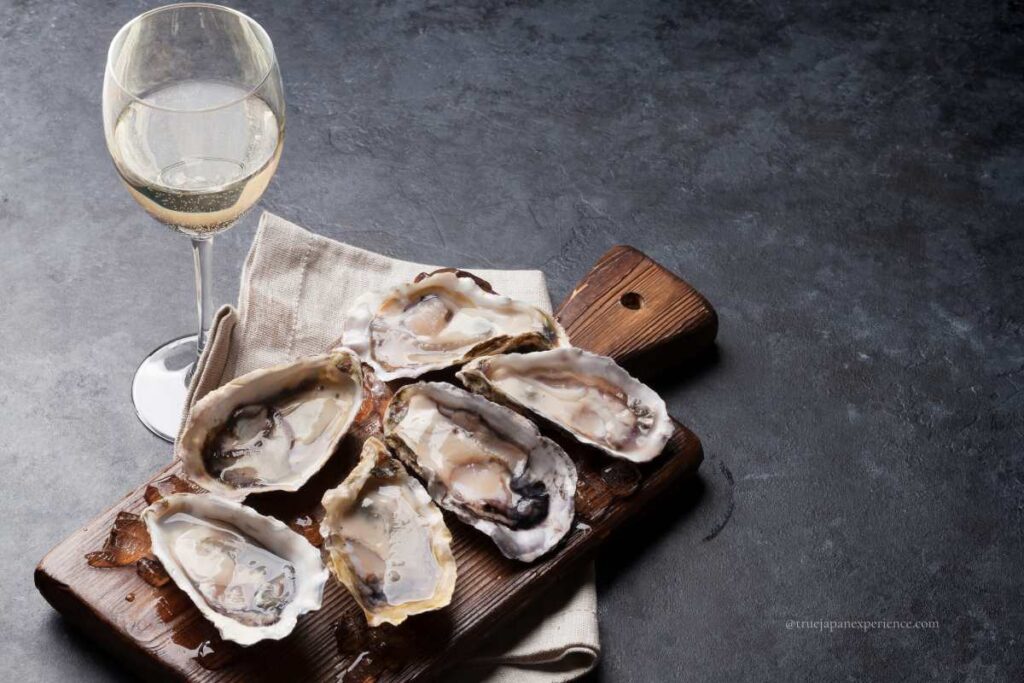
Oysters: Hiroshima is the most famous place for oysters in Japan. Fresh oysters are served raw, grilled, or fried. They are big, juicy, and full of flavor during the winter season.
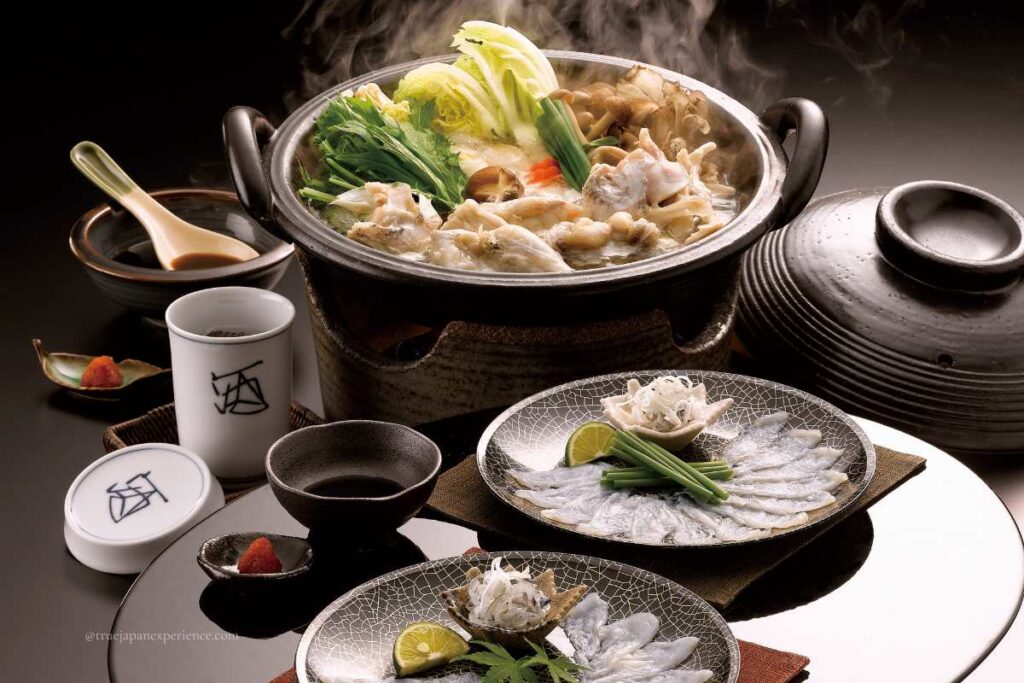
Fugu (puffer fish): This special and expensive dish is also most common in winter. It is served as sashimi, fried, or in hot pot. Because fugu can be dangerous, only licensed chefs are allowed to prepare it.
Trying these seasonal dishes makes you understand another side of Japanese winter food, one that is deeply connected to the ocean and Japan’s geography.
Sweet Winter Treats
Winter in Japan also has many sweet choices. You can try traditional desserts and simple street snacks.
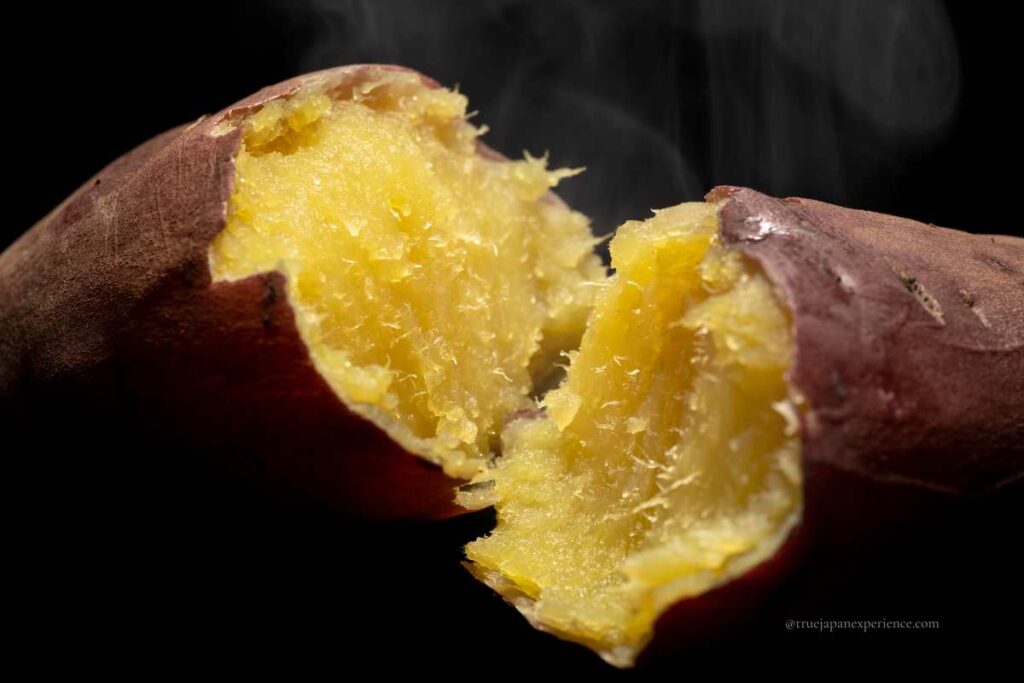
Roasted sweet potatoes (焼きいも yaki-imo): Street vendors and supermarkets sell hot sweet potatoes wrapped in paper. Their natural taste and soft texture are perfect for cold evenings.
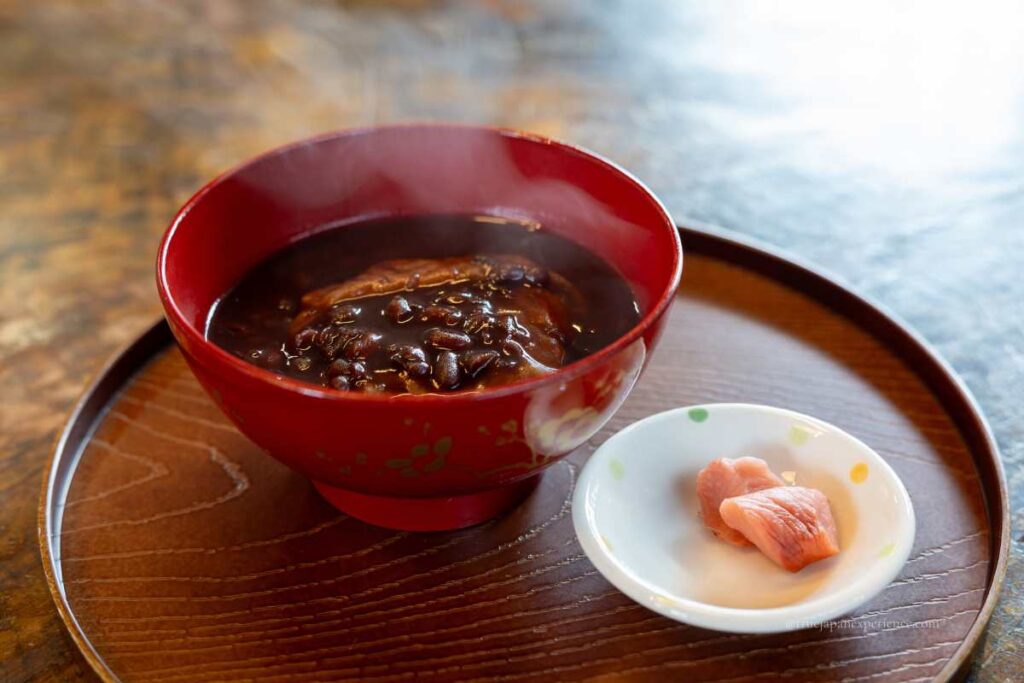
Zenzai or お汁粉 (oshiruko): These are sweet soups made with red beans and mochi. Eating a warm bowl after visiting a shrine in winter feels both traditional and satisfying.
Sweets in winter are not only about taste but about comfort. The smell of roasted sweet potatoes or the gentle sweetness of red bean soup bring special seasonal memories.
Drinks to Keep Warm
Along with food, Japan also has drinks to warm you during winter.
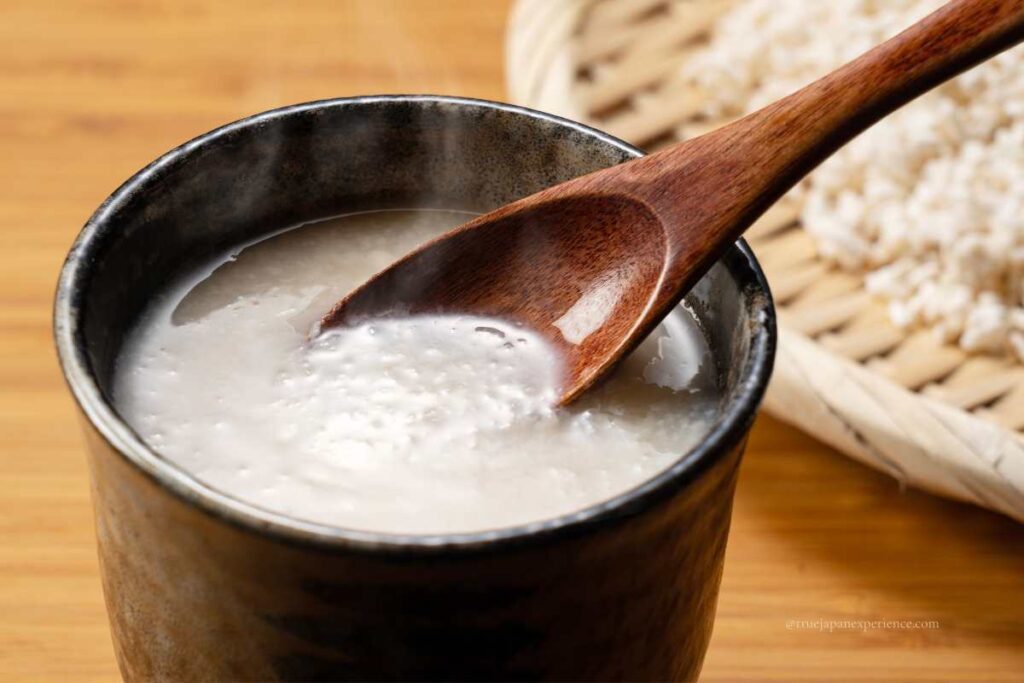
甘酒 (amazake): A sweet drink made from fermented rice. It is low in alcohol or non-alcoholic, and people often enjoy it at shrines during the New Year season.
Hot green tea or matcha: These simple drinks are available everywhere in Japan, from vending machines to tea shops. Holding a hot bottle of tea from a vending machine is a small pleasure on cold streets.
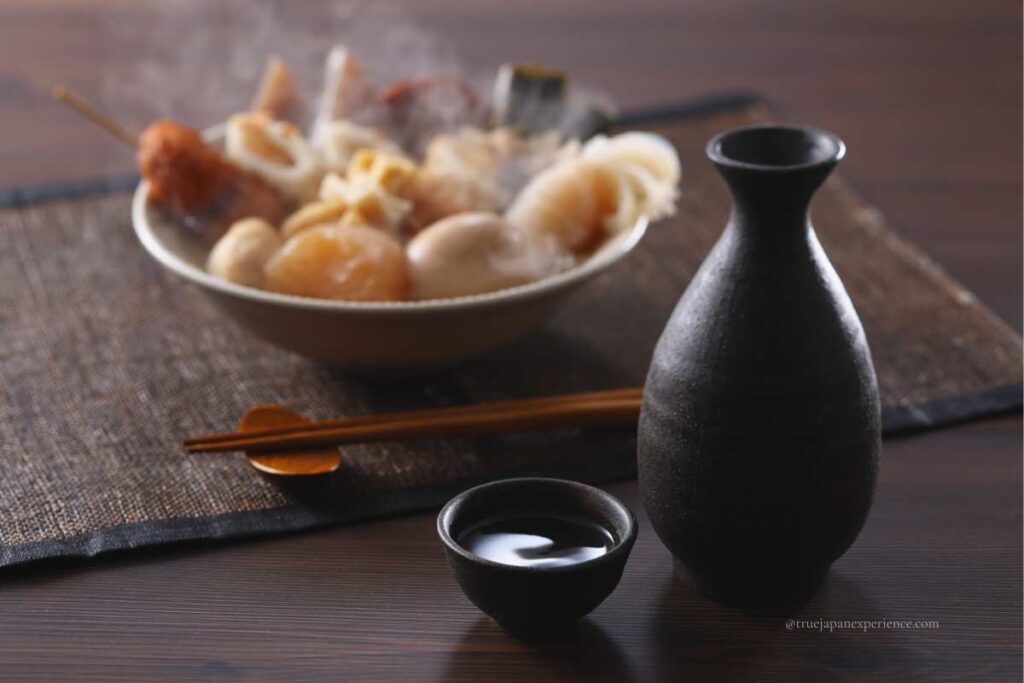
Hot sake (熱燗 atsukan): In winter, sake is often served warm. This traditional drink matches perfectly with oden, hot pot, and grilled fish.
These drinks show that Japanese winter food is not only about meals, but also about beverages that complete the winter dining experience.
Where to Try Japanese Winter Food
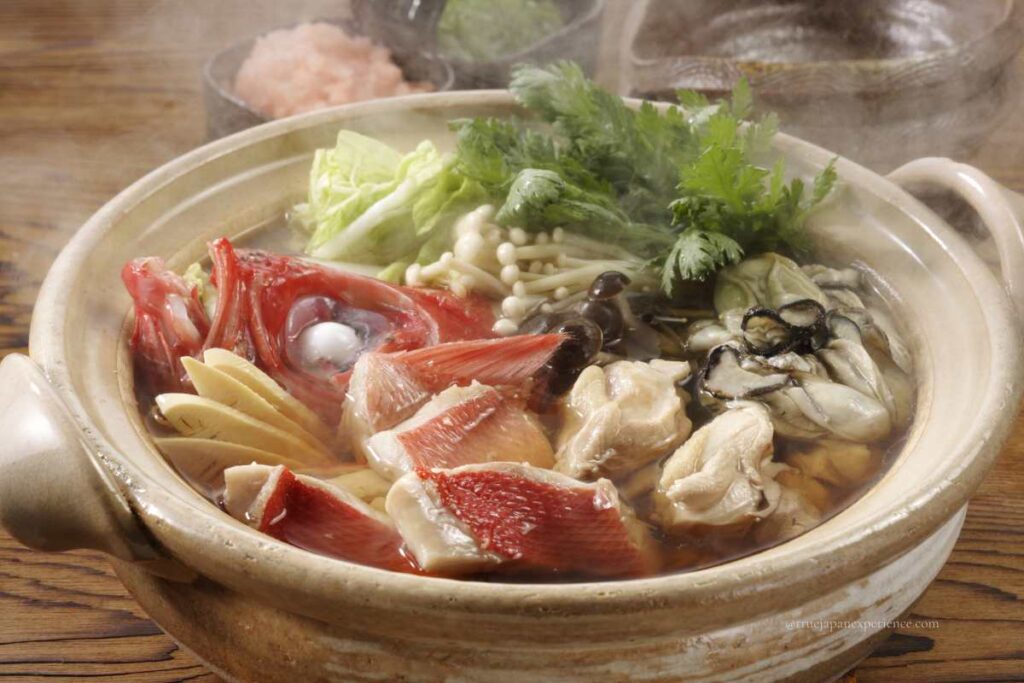
Visitors to Japan may wonder where to taste all these dishes. Here are some ideas:
- Izakaya (Japanese pubs): They often serve nabe, oden, and warm drinks.
- Street food stalls at winter festivals: Try yaki-imo, amazake, or sweet red-bean soup.
- Convenience stores: Easy access to oden, hot drinks, and seasonal snacks.
- Regional travel: Go to Hokkaido for crab and miso ramen, Hiroshima for oysters, or Kanazawa for rich seafood dishes.
- Ryokan (traditional inns): These offer special winter meals, often using local seasonal ingredients.
By trying food in these places, tourists can enjoy Japanese winter food in both casual and traditional ways.
Conclusion
Winter in Japan is more than snow, lights, and festivals—it is also a season of delicious food that warms the body and the heart. From hot pot shared with friends to street oden, ramen in the snow, sweet winter treats, and hot drinks, food is a major part of Japanese winter culture.
For anyone visiting Japan in the colder season, trying Japanese winter food is a must. It will not only keep you warm but also give you a deeper understanding of Japanese traditions and daily life.
Before you pack your bags, take a look at this guide to prepare for the cold:
👉 Japan Winter Weather: What to Expect and What to Wear
